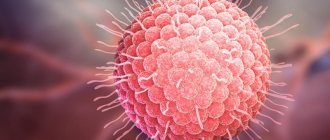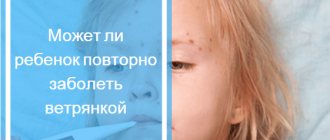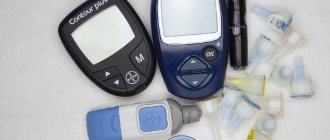One of the most contagious diseases that most often affects children is chickenpox, and it brings a lot of concern to parents. It is quite easy to recognize the disease even without special medical knowledge, because it is accompanied by vivid symptoms, which are almost impossible to confuse with another disease. Let's try to figure out how you can protect your beloved child from the disease, what symptoms chickenpox manifests itself in children, a photo of the initial stage will certainly help parents recognize the unpleasant disease at first sight.
Causes of infection
Chickenpox in children is caused by a virus of the Herpesvirus family - Varicella-zoster. It is transmitted by airborne droplets, contact, and also transplacentally, in case of infection of a woman during pregnancy. The peculiarity of the virus is its volatility. In an enclosed space, it can spread 20 meters and affect children who have not had chickenpox before, and even adults. The virus can also “fly” through ventilation systems, elevator shafts, and stairwells.
Varicella zoster enters the body through the mucous membranes of the upper respiratory tract and enters the blood. Then it penetrates the skin, where it begins to actively multiply, affecting the epithelial layer, causing a pathological process in it (spots, papules, detachment of the epidermis).
Chickenpox most often occurs in children from 6 months to 10 years. In rare cases, the Varicella-zoster virus can also affect infants.
This is a seasonal disease; children most often get chickenpox in the spring and autumn, when the immune system weakens. Susceptibility to it is 100%. A child becomes contagious a day before the rash appears, which allows the infection to spread freely in the children's community. The infection stops spreading on the 6th day after the last vesicle on the body.
A child who has been in contact with a patient with chickenpox is isolated for 21 days.
After chickenpox, immunity is formed. However, with a weakened immune system, a child may develop shingles or become re-infected, as the virus continues to reside in the body in the nerve ganglia. Unfortunately, it is impossible to completely get rid of it.
Clinical picture of chickenpox
The incubation period for chickenpox varies from 7 to 21 days. From the moment the virus enters the mucous membrane of the upper respiratory tract, the prodromal period begins - that is, a nonspecific period of illness, when symptoms such as lethargy, moodiness, decreased appetite, and general malaise may appear. However, often the prodromal period is not expressed and the rash, a characteristic symptom of the disease, appears against the background of complete health, which is sudden and unexpected for parents.
The period of rash is the main clinical symptom complex of the disease. The rash occurs due to the multiplication of the virus, and is accompanied by high fever, general weakness, muscle pain and headache.
Chickenpox symptoms
A characteristic sign of chickenpox in a child is the appearance of a rash with serous contents on the body. It is first visible on the scalp and back. Then it spreads throughout the body, but without affecting the palms and soles. Often the rash can be observed on the mucous membranes of the eyes and mouth.
Chickenpox begins suddenly, with a sharp rise in temperature to 38-40 °C. After 1-2 hours, you can detect several 5-6 centimeter red spots on the skin in the place where the virus settled. After 5-6 hours, bubbles with a clear liquid form in place of the spots. Over time, the number of papules increases and they are observed throughout the body. The sick person will be sprinkled daily for 5 days.
In addition to fever, children are bothered by severe itching, weakness, headache, and muscle pain. Enlargement of the cervical lymph nodes may also occur.
After 3 days, the first bubbles begin to dry out and crusts appear in their place, which disappear on their own after 7-14 days. Only subtle pinkish pigmentation remains on the skin, which will soon disappear without a trace.
The patient should not be allowed to scratch and pick off scabs. Firstly, bacteria can be introduced into the wounds, which will lead to the development of infection. Secondly, small scars may remain on the skin.
God saves man, who save himself
There is no clear answer to this question. Most doctors urge parents not to tempt fate and not provoke illness in their children. After all, although chickenpox in children is usually mild, there are exceptions. Although extremely rare, this “trifling” illness can turn into a serious complication - encephalomyelitis (inflammation of the brain).
Article on the topic
What to feed and how to wash the baby? Pediatrician's advice In addition, for some people, the virus remains in the nervous system for many years and may one day manifest itself in the form of shingles. And when scratching the itchy blisters, the child can get a secondary infection, the treatment of which cannot be done without antibiotics. Yes, and scars remain on the skin. It is especially dangerous to catch chickenpox during a period of weakened immunity - after an illness, vaccination... Well, it is better for children with chronic diseases to avoid infection with this virus. Optimally - with the help of vaccination.
Chickenpox threatens children in their first year of life with dangerous complications. A severe form of the disease is often accompanied by fever, the formation of long-term non-healing ulcers, hemorrhages on the skin, convulsions and even loss of consciousness. The nervous system and internal organs may be affected: kidneys, lungs, heart and joints.
Fortunately, infants in the first months of life rarely suffer from this infection, because they are protected by their mother’s immunity (but only if the mother has previously had chickenpox). Therefore, women who are planning a pregnancy and have not had chickenpox in childhood are better off getting vaccinated. By the way, vaccination will protect you from the disease, even if contact with someone with chickenpox has already occurred. You just need to have time to get vaccinated within 2-3 days after such communication.
How to treat a rash during chickenpox →
Typical and atypical form
There are two forms of manifestation of the disease: typical and atypical. In the typical case, the patient’s general condition is not disturbed, the temperature rises slightly (up to 38 °C). A characteristic rash with chickenpox is observed on the skin and mucous membranes.
The atypical variant of the disease is divided into forms:
- Rudimentary . It is considered a mild form of chickenpox, characterized by the appearance of a small amount of rash, often not progressing to the stage of blisters and crusts. The child does not have a fever, does not have a headache, and does not feel worse. Some doctors believe that the course of this form of chickenpox is achieved due to strong immunity. Others believe that the child inherited resistance to the virus from his parents.
- Generalized . Characterized by damage to all internal organs. Typically, this form develops in patients with very weak immunity. If not treated promptly, it can be life threatening.
- Bullous . It occurs with the appearance of large blisters on the skin filled with a yellowish-turbid liquid. If the vesicle accidentally ruptures, ulcers form that do not heal for a long time. In some cases, the blisters can merge into one huge one, which, when ruptured, leaves a deep wound.
- Gangrenous . It is extremely rare and only occurs in children with immunodeficiency. The virus affects the deep layers of the skin with its gradual death. Necrosis begins a few days after the first rash appears. A characteristic sign is the development of dark purple rims around the papules. The blisters contain ichor; when they rupture, a dense crust is formed, under which a deep, difficult-to-heal ulcer is visible. This form of chickenpox has a high risk of death, even with treatment.
Severe chickenpox is mainly observed in adults, newborns or children with severe immunodeficiency.
Treatment of chickenpox with folk remedies
The task of parents is to reduce pain and itching throughout the course of the disease. Auxiliary treatment with folk remedies consists of externally lubricating the rash and taking baths.
- 1-2 times a day, lubricate itchy skin with a weak concentration of baking soda solution, using cotton pads, which must be changed every 5-10 cm of treated skin;
- During the day, every 3-4 hours you need to sit the child in cooling baths; At the same time, ½ cup of baking soda is poured into the bath; The duration of the bath is no more than 15 minutes;
- Alternate baths with soda with baths with potassium permanganate, dilute the water in the bath until slightly pink; duration - no more than 5 minutes, frequency - 1-2 times a day;
- Alternate baths with celandine; preparation method: pour boiling water over a handful of fresh chopped herbs, let it brew until it cools naturally, pour the infusion into the bath; bath duration: 10 minutes, frequency: 2 times a day; prepare a fresh infusion of celandine each time; it is not recommended to immediately prepare a large volume of infusion for several baths;
- A bath with chamomile infusion is also prepared; prepare a rich infusion of the herb along with stems and leaves, pour into a bath with warm water. This bath is good because you can take it in unlimited quantities and sit in it for an unlimited time, as long as the child wants.
- Along with bathing, traditional healers recommend strengthening the immune system so that the body can more successfully fight the disease. A vitamin mixture of honey and lemon juice helps speed recovery.
- The components are mixed in equal proportions immediately before use. Children should be given before meals, 1 tsp, 3 r. per day, given the absence of allergies to citrus fruits.
- When the resulting crusts begin to fall off, it is recommended to lubricate the redness on the skin with vitamin E from ampoules. You can use any unrefined sunflower oil. This treatment helps restore the skin so that “pockmarks” do not remain on the skin.
Possible complications
In most cases, chickenpox occurs without complications. However, some patients may experience the following adverse effects:
- pustular lesions of the skin - boils, phlegmons, abscesses (occur due to the penetration of pathological microorganisms into acne);
- encephalitis - severe damage to the central nervous system with seizures;
- myocarditis - inflammation of the heart muscle, characterized by pain in the heart area;
- pneumonia with multiple foci on the lung tissue;
- nephritis is an inflammatory kidney disease that develops in the final stages of chickenpox;
- stomatitis - damage to the oral mucosa;
- vulvitis or vaginitis in girls due to the presence of rashes in this area.
These complications usually occur in adults or children with weak immune systems. That is why it is better to have chickenpox in childhood than to allow it to appear in adulthood.
Treatment options
If you suspect chickenpox, you must call a doctor at home to confirm the diagnosis. The child is limited in active games, prescribed bed rest and drinking large amounts of liquid (fruit drinks, compotes, tea) to remove toxins from the body.
The patient may be prescribed the antiviral drug Interferon, which will reduce the external manifestations of chickenpox and the area of the rash. In severe cases, Acyclovir is prescribed. To normalize body temperature, antipyretic drugs (Nurofen, Paracetamol) are used.
To prevent infection of wounds, it is recommended to treat them with antiseptics - brilliant green or Fukortsin. Application of one of the drugs also helps to detect the appearance of new papules.
To reduce itching, the doctor may prescribe antihistamines (Fenistil, Suprastin).
Antibiotics for chickenpox are indicated only in the case of a bacterial infection and suppuration of the rash.
Your child's nails should be kept short to prevent scratching the rash. Change bed linen daily, wash the room frequently and ventilate regularly.
Atypical forms of chickenpox (except rudimentary) are treated in the hospital.
How to properly treat chickenpox?
Antibiotics are not used to treat chickenpox because chickenpox is caused by a virus and cannot be cured in this way. Sometimes it happens that children are prescribed medications, which means that along with the virus, the body is also attacked by a bacterial infection. Most often this is caused by improper care of the affected skin. If a child scratches the wounds, they can get infected, which will eventually cause blisters to fester and cause serious skin infection. That is why the task of parents at the initial stage of the disease is to constantly monitor the condition of the skin. Try to explain to your baby that you can’t scratch the blisters; burn them more often with brilliant green or fucorcin to relieve itching. It is worth remembering that it is strictly forbidden to use alcohol or iodine for such an operation.
There is no cure for chickenpox; all treatment consists of systematically cauterizing new blisters and caring for the affected areas of the skin. To reduce itching and keep your body clean, do not give up water procedures. The only restriction is that you cannot swim under running water. During the incubation period, the best bath for children is a warm bath with a weak solution of manganese, which will not only disinfect the skin, but also effectively dry emerging wounds.
Treatment of chickenpox will be more fruitful and faster if you follow a special diet. During the active stage of the disease, it is worth limiting the consumption of allergenic foods in children, replacing them with milk porridges, lean meat and products of plant origin. Chickenpox in children is accompanied by a high temperature, so at this time you cannot do without drinking plenty of fluids: compotes, juices, nectars, tea, herbal infusions and clean water are suitable. The more fluid the baby drinks, the sooner toxic substances are eliminated from the body. Some children completely lose their appetite during chickenpox, so parents have to make considerable efforts to feed the baby. In this case, it is permissible to give the child any foods he wants, since to successfully fight the virus the vital forces of the body are required, and their replenishment is possible only with increased nutrition.
Useful: How to recognize and how to treat lichen in children?
Treatment of chickenpox is accompanied by the mandatory use of antipyretics, which help bring down persistent fever. Most often, medications containing paracetamol are recommended for use, but aspirin should not be given to children, since it is harmful to a fragile body. For rashes on the eyes, you can use special ointments, for example, “Acyclovir” - a medicine against herpes, and the anti-allergic drug “Eden” or “Diazolin” will help relieve itching. However, any pharmaceutical drug should be used only after consultation with your doctor.
How to prevent chickenpox in children?
Despite the fact that chickenpox suffered in childhood does not cause much harm to the body and in most cases proceeds as mildly as possible, it is better to prevent any disease than to treat it. As for chickenpox, the best protection against the virus is the child’s strong immunity. To minimize the risk of contracting the chickenpox virus in children, it is important to follow the basic rules of a healthy lifestyle:
- frequent walks in the fresh air and regular exercise are considered the most effective defense of the body against all kinds of infections;
- active vitaminization of the body, especially in the cold season, helps strengthen the immune system;
- hardening is one of the options for preventing viral diseases;
- timely treatment of infectious diseases prevents severe damage to internal organs, so immunity does not decrease over time;
- Regular hygiene of the body and clothing prevents the virus from entering the body.
If, in spite of everything, chickenpox attacks your child, try to protect the rest of the family from the insidious infection. You can prevent the spread of infection by following these recommendations:
- regularly change the bed linen and clothes of a sick baby; under no circumstances wash the child’s clothes with other things;
- minimize the contact of a sick baby with children who have not previously had chickenpox;
- observe basic hygiene rules, using exclusively personal means: towel, toothbrush, dishes;
- provide the baby with bed rest, in this way the treatment of the disease will be as effective as possible, and other family members will be isolated from the patient;
- Vaccination of children and adults can also provide protection against the chickenpox virus, but this method has not yet been proven to be 100% effective.
Helpful: Early detection of asymptomatic tuberculosis will show the Mantoux reaction
Although most children get chickenpox, some manage to remain immune to this virus. This category includes children with strong immunity, so we can say with confidence that a child who leads a healthy lifestyle and receives nutritious, high-quality nutrition is very rarely attacked by chickenpox.
Possible complications of chickenpox
If the treatment of the disease is incorrect or the disease is left to chance, the consequences of such a negligent attitude towards the virus can be very dire.
- Scratching wounds can lead to scarring of the skin - if, with proper care of the damaged areas, the film from the tubercles disappears by itself, leaving no traces, then with constant peeling of the skin, children may be left with scars and welts.
- Excessive activity of children during the initial stage of the disease can lead to a rapid rise in temperature, which in turn often causes the development of pneumonia or otitis media.
- Excessive use of medications is considered an unnecessary risk, since chickenpox cannot be treated with them. Do not overuse chemical compounds; use medications only when absolutely necessary, for example, to reduce fever or relieve itching.
- Poor nutrition can lead to stomach problems, so even if you have no appetite, try to feed your children. Offer a sick child an unusual and beautifully decorated dish, and in extreme cases, promise sweets after the main snack.
- For pregnant women, chickenpox is considered a very dangerous virus, so if the expectant mother comes into contact with a sick child, it is better to vaccinate immediately.
- Adults who have not previously had chickenpox are at the greatest risk, since the disease in adulthood is most severe and can have a lot of complications, for example, developing into chickenpox encephalitis. Having noticed the first symptoms of the disease, adults should also get vaccinated.
In any case, chickenpox is not the most terrible disease that exists in the world, so you should not worry too much if you become infected. However, to prevent any negative consequences, it is necessary to strictly follow the instructions of the attending physician and observe basic rules of hygiene and a healthy lifestyle.
Useful: Unusual ears, or why do a child’s ears itch?
Is it possible to swim while sick?
Previously, doctors forbade soaking papules until the crusts came off, believing that this led to the formation of even larger rashes and increased the risk of complications. However, doctors have proven that water has no effect on the rash, and its appearance on the skin will continue until the body produces antibodies to the virus. Thus, swimming with chickenpox is not prohibited. Water relieves itching, opens pores, and cleanses the skin of dirt and sweat. After taking a bath, many children experience relief. But still, when bathing, it is important to adhere to the following:
- do not bathe when the body temperature is high (it is better to refrain from water procedures altogether in the first few days of illness);
- You can’t lie for a long time or steam in the bath (it’s better if the child washes in the shower);
- the water temperature should not be hot;
- do not use gels or soaps (they dry the skin, which will increase irritation);
- Do not rub your body with a washcloth or sponge;
- do not dry yourself with a towel (just lightly pat your body with a soft towel);
- as soon as the skin dries, the papules must be treated with an antiseptic.
Chickenpox in children, photo of pimples
What information will help parents understand the characteristics of the disease in order to prevent complications and help the child comfortably endure the disease? It is necessary to study: exactly how chickenpox begins and develops in children, photos of pimples at different stages, possible complications and different forms of the disease. Only this knowledge will not allow you to be caught off guard and react correctly to alarming symptoms.
The most useful will be the photos, which should be carefully studied. In the first stages, the rashes may resemble other diseases, so it happens that adults do not even pay attention to them. If you know exactly what pimples that appear after the incubation period look like, it is quite easy to respond to the disease in a timely manner and alleviate the condition of your beloved child.
When can you go to kindergarten and school after illness?
If new pimples stop appearing, then already on the 6th day after that you are allowed to go to the children's group. On average, the period from the onset of the disease is approximately 2 weeks.
However, there is no need to rush to enroll your child in a children's group. Having had chickenpox, he becomes “easy prey” for pathogenic microorganisms, since his immunity is reduced. Therefore, if possible, it is recommended to leave it at home for another 1-2 weeks to strengthen the immune system.
Prevention
Vaccination is used to prevent chickenpox. Vaccination against infection began in 2008 for children aged 1-2 years. It allows you to prevent the development of the disease even if the baby has been in contact with the patient. But provided that the injection is carried out within 72 hours after contact.
A week after the injection, the child may show mild signs of chickenpox: an increase in body temperature to 38 ° C, mild malaise, and minor elements of a rash. These manifestations of the disease do not require treatment; they will go away on their own in a couple of days.
Chicken pox is not a harmless disease, as it seems at first glance. If it is mild in children, then in adolescents and adults it is fraught with the development of serious complications. In some countries, a sick child is not isolated from healthy ones and continues to attend the children's group. Perhaps this is correct, because it is better to get sick in early childhood than to encounter it later, when the risk of developing consequences is very high.
Views:
1841.












